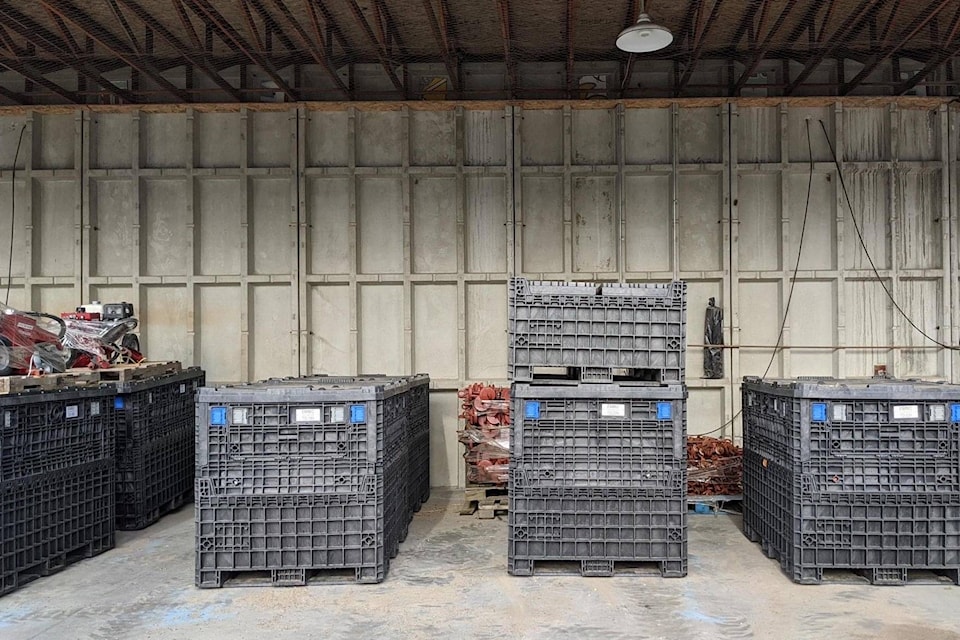The waters of the Kettle River systems are expected to reach their peak within the first two weeks of May, and emergency operations staff with the Regional District of Kootenay Boundary (RDKB) are keeping watch.
“The Regional District of Kootenay Boundary continues to watch rivers closely as they move toward peak flows anywhere from seven to ten days from now, depending upon weather,” an April 30 release from the regional district states. Since early last month, the local government’s Emergency Operations Centre (EOC) has been activated at a Level 2, which means several staff members are continually monitoring water levels and projections throughout the system.
“In the southern half of the watershed, the low elevation sites are very melted-out,” said Graham Watt of the City of Grand Forks in a 2020 freshet briefing on April 29. “What that means is that if we get a wide-spread storm system, there are more areas that are dry [and] it decreases some of the concern.”
Watt said that because of a high snowpack in the region, “[the watershed] is really sensitive to that rain-on-snow [event].” While no major rain events are currently forecast in the next few days, “that can change in a two-to-three day period,” Watt said. As such, the EOC and Emergency Management BC are actively monitoring changes to local water levels.
In a May 1 release, RDKB staff said that cooler temperatures projected for the first few days of May would help keep a water surge at bay.
“We are most concerned about any rain we could about a week from now, and of course we learned in 2018 that extreme weather can come on suddenly in a specific drainage or mountain range, but right now all trends show a fairly stable freshet for the next week,” EOC director Mark Stephens said in the release. “We could see one- to two-year return for river levels, and as always with high water could see some erosion.”
WATCH: RDKB staff walk through Kettle River projections
River projections
A May 1 projection from the BC River Forecast Centre for the Kettle River near Westbridge suggests the river will spike between May 1 and May 3, before returning to near-current levels for several days. The spike projected near Westbridge is assumed to remain under the two-year return levels for the river.
Between Midway and Grand Forks, the Kettle River’s rate of flow is expected to rise slightly between May 1 and May 4, but stay below any flood stage through Ferry County.
The Granby River near Grand Forks, meanwhile, is expected to rise slightly above its annual return average over the weekend, before settling to around its current level, as of April 30.
“As we approach our high water I would like to encourage residents to take the time and prepare by signing up for the RDKB evacuation alerting system and creating a personal or household preparedness plan,” Stephens said.
Residents can visit emergency.rdkb.com, where real-time graphs of water levels in the Kettle and Granby rivers can be found. People can also register for the RDKB Emergency Alerting System by visiting https://ca.voyent-alert.com/vras/user-registration.html.
Flood protection equipment
The RDKB has stockpiled 250,000 sandbags and will announce sand pick-up locations if the situation dictates a need. Sandbags and sand at these central sites would be free. Neither the RDKB nor the Province of BC will pay for sand ordered and delivered privately to any property in the region.
As well, the RDKB and the City of Grand Forks have plans to prepare flood protection equipment such as Tiger dams (large tubes) and other temporary barriers throughout the region, as a precaution.
“At this point, we don’t have plans to deploy them, unless we’re faced with some sort of catastrophic flooding, which is not forecast at this time,” said Chris Marsh, deputy director of the EOC for the RDKB.
@jensenedw
Jensen.edwards@grandforksgazette.ca
Like us on Facebook and follow us on Twitter.
